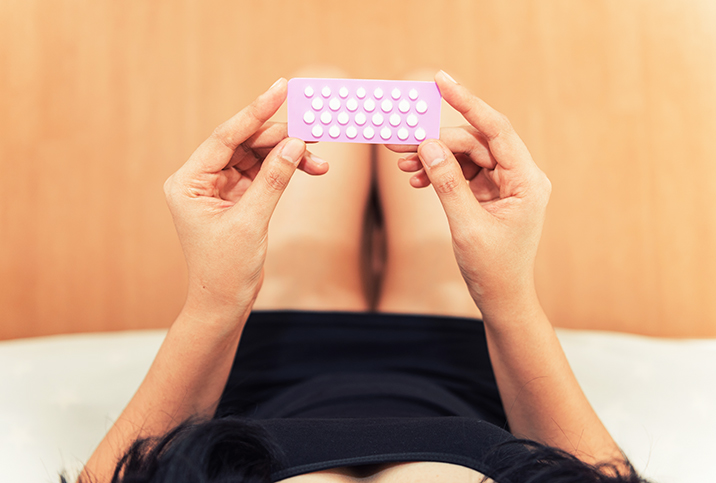Real Birth Control Reviews from a Real Woman

My research into birth control methods revealed a ton of results stuffed with scientific jargon, side effects and medical perspectives. While all of that is important, what women really want to know is how each method will affect their body, and which one will work for them.
I sifted through the fine print and tried three of the top four types of birth control. Here is a review of each and some perspective about how the three impacted my life.
Hopefully, my experiences provide a semblance of insight as you conduct your own research.
Birth control pill
The birth control pill was my first choice to regulate my unpredictable and heavy periods. I experienced the common side effects, but over time, they intensified. My cystic acne returned, I gained 30 pounds, my IBS-C (irritable bowel syndrome with constipation) was intensified by the hormones, and my mood swings were at supervillain levels, at best.
After about six months and one lost relationship, I stopped taking the pill.
I learned I wasn't alone. Many women struggle with birth control pills, but at the time, hormone-free options did not exist. Instead, I decided I would deal with my irregular periods and use traditional over-the-counter contraceptives in the meantime.
Depo-Provera injection
Fast-forward four years and one child, and I needed a contraceptive I could rely on without the hassle of remembering to take a daily pill. So I turned to the Depo-Provera injection, which lasts for three months.
The duration of each treatment was definitely my favorite aspect of this method.
The side effects were mild. I was a little moody while my body adjusted and I gained about 10 pounds, but I added a daily walk to my routine and the weight fell off. My period went from eight days of heavy bleeding to one day of light spotting.
The logistics of getting my injection, however, were a major sticking point. Every three months, I picked up the medication at the pharmacy and hoped my doctor could squeeze me in for an injection. Any potential delay is noteworthy, because there's a 72-hour window to get injected; otherwise, you need to use alternative contraception for a week.
This meant that during the week of injection, my full attention had to shift to my birth control. I had to remember to call in my prescription, and I missed part of a workday because of the appointment with my gynecologist.
To make it even more fun, the pharmacy would sometimes have to special-order my dose, so my injection would get delayed or rescheduled. After a year, I moved on to other options, but I definitely appreciated this option for its lack of side effects.
Intrauterine device (IUD)
The intrauterine device (IUD) was an intriguing option for several reasons: It lasts five years, can be hormone-free, and most women don't have their period with this method. Unfortunately, it was a nonstarter for me because an IUD can intensify heavy periods and menstrual cramps, and it is not recommended for women who have a family history of endometriosis, which checked all the boxes for me.
Another issue is that an IUD has a string for easy removal. Because I use a menstrual cup, there's a risk I could inadvertently remove my birth control. Fortunately, there are other long-term alternatives that don't have as many physical complications.
Subdermal implant
My gynecologist recommended the subdermal implant, a 2-inch-long plastic rod about the size of a matchstick, which is inserted under the skin inside your upper arm. The contraceptive lasts for three years.
The insertion process took about 30 minutes. First, I took a basic pregnancy test through a urine sample. Then, my doctor marked the insertion spot and injected lidocaine into the top layer of skin to numb the area. She made the incision and inserted the implant between the layers of skin using a tool that came with the implant. A few carefully placed steri-strips and a pressure bandage later, and I was on my way.
The incision healed in about a week, and I have a tiny scar that looks like a freckle. The only side effect I have is breakthrough bleeding, which should pass within the first six months; for now, I wait.
Which birth control is right for you?
After much trial and error, and about a decade of side effects, I think I finally found the right birth control for me. However, every woman is different. You should talk to your doctor about what options will work best for your body and lifestyle.
This process has taught me that birth control still has a lot of room for improvement, and I hope that someday soon we will have a side-effect-free method of birth control. In the meantime, I will continue to share my experiences to provide some clarity about all the information out there.


















